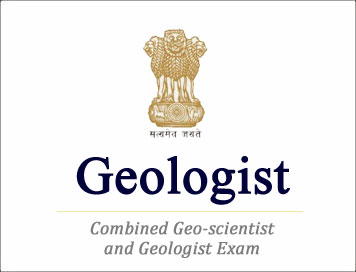(HOT) UPSC Current Affairs 2025 PDF
NEW! The Gist (NOV-2025) | E-BOOKS
UPSC Geo-Scientist and Geologist Exam Papers 2018 : Geology Paper- II

(Download) UPSC: Geologist Examination Papers-2018
Exam Name : UPSC Geo-Scientist and Geologist Exam
Subject : UPSC Geo-Scientist and Geologist Exam Papers 2018 : Geology Paper- II
Year : 2018
GEOLOGY - Paper II
Time Allowed : Three Hours
Maximum Marks : 200
QUESTION PAPER SPECIFIC INSTRUCTIONS
Please read each of the following instructions carefully before attempting questions.
There are ELEVEN questions divided under SIX Sections.
Candidate has to attempt SIX questions in all.
The ONLY question in Section A is compulsory.
Out of the remaining TEN questions, the candidate has to attempt FIVE choosing ONE from each of the other Sections B, C, D, E & F.
The number of marks carried by a question / part is indicated against it.
Symbols, abbreviations and notations have their usual standard meanings.
Attempts of questions shall be counted in sequential order.
Unless struck off, attempt of a question shall be counted even if attempted partly.
Answers must be written in ENGLISH only.
Neat sketches are to be drawn to illustrate answers, wherever required.
Wherever required, graphs / tables are to be drawn on the answer-book itself.
Any page or portion of the page left blank in the answer-book must be clearly struck off.
SECTION 'A' (Compulsory Section)
1. Write notes on each of the following:
1. (a) Partition coefficient
1. (b) Binary eutectic in magmatic crystallization
1. (c) CIPW Norm
1. (d) Metasomatism
1. (e) Shock metamorphism
1. (f) Stylolite
1. (g) Incized Valley Fill
1. (h) Soil profile
1. (i) Cultural eutrophication
1. (j) Acid mine drainage
SECTION 'Bo (Mineralogy, Geochemistry and Isotope Geology)
(Attempt any ONE question)
2. (a) Briefly describe the structure and classification of pyroxene group
of minerals.
2. (b) How would you determine optic sign of a biaxial mineral ?
3. (a) How do we come to know about the origin and evolution of atmosphere
from geological record ?
3. (b) Illustrate the basic principle of radiometric dating of rocks. How would
you use such principle in U-Pb decay series for constructing 'concordia' curve
for dating of minerals such as zircon ?
SECTION "C" (Igneous Petrology) (Attempt any ONE question)
4. (a) Explain the processes involved in the evolution and differentiation
of a magma.
4. (b) Illustrate with examples the significance of textures in understanding crystallisation history of igneous rocks.
5. (a) What are alkaline igneous rocks? How do you explain their
compositional variation in relation to plate tectonics ?.
5. (b) How are ultramafic rocks classified as per IUGS ?
SECTION 'D' (Metamorphic Petrology and Processes)
(Attempt any ONE question)
6. (a) Discuss the role of temperature, pressure and fluids in causing
different types of metamorphism.
6. (b) What is isograd ? How is it useful in distinguishing different
metamorphic terranes ?
7. (a) Describe the granulite facies metamorphism in relation to mineral
assemblages, composition and P-T conditions.
7. (b) What are paired metamorphic belts ? How do you explain the development of
such belts ?
SECTION 'E'
(Sedimentology)
(Attempt any ONE question)
8. (a) What are the different types of sediment-gravity flows ? How would
you infer rheological conditions of such flows from their deposits in rock
record ? 20
8. (b) Describe with neat sketches two primary sedimentary structures that are
commonly useful for paleocurrent analysis. How would you use paleocurrent
analysis to facilitate interpretation of depositional environment from rock
record?
9. (a) How would you explain 'shallowing upward' facies sequence of
shallow-marine siliciclastic and carbonate deposits in rock record ?
9. (b) How would you distinguish between sedimentary basins of continental rift
and foreland tectonic settings from sandstone detrital framework composition ?
SECTION 'F' (Environmental Geology and Natural Hazards)
(Attempt any ONE question)
10. (a) Describe common biological and toxic chemical pollutants of water.
Add a note on their mobility in hydrological regime.
10. (b) How do geology and topography affect the flood conditions of a river ?
11. (a) Explain the role of various factors affecting slope stability.
11. (b) What measures can be taken to control ‘Global Warming'?
Click Here to Download PDF
<< Go Back To Main Page
Courtesy: UPSC

